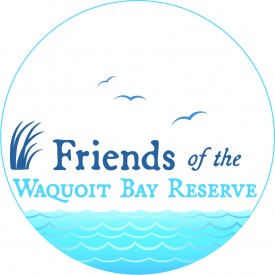Exposure of marine worms to culture of Alexandrium catenella
Project Title: Exposure of marine worms to culture of Alexandrium catenella
Duration: May 2024 – July 2024
Funding Source(s): WHOI
Principal Investigator and contact info:
Lead Investigator / onsite-contact: Donald Anderson / Sylvain Gaillard
Affiliation: Woods Hole Oceanographic Institution
Email: danderson@whoi.edu / sylvain.gaillard@whoi.edu
Project Description: Toxic species of the dinoflagellate genus Alexandrium can produce toxigenic compounds that can accumulate in filter-feeding organisms, including saxitoxins, responsible for paralytic shellfish poisoning (PSP) in humans. While the toxin pathways have been well characterized in several marine organisms, especially marine bivalves, there is little information on animals indirectly consumed by human or directly consumed traditionally as subsistence food by indigenous populations, which are not monitored for saxitoxin contamination and thus pose a risk of PSP in consumers. Several marine worms have been described as prey items of walrus, a top-predator hunted in northern circumpolar regions of Alaska and Russia. We aim to investigate the uptake, accumulation and depuration of saxitoxin by locally sampled marine worms exposed in vitro to an Alaskan isolate of A. catenella. The results of this study will be directly beneficial for native communities, as well as will improve knowledge of saxitoxin transfer through the food-chain, including to local fish and other animals that consume marine worms.
Investigating the presence of microplastics in the estuarine biota of Waquoit Bay
Project Title: Investigating the presence of microplastics in the estuarine biota of Waquoit Bay
Duration: June-2023 to December-2023
Funding Source(s): NSF-REU Biological Discovery in Woods Hole Program, and the Semester in Environmental Science.
Principal Investigator(s): Javier Lloret (jlloret@mbl.edu)
Onsite-contact: Kelsey Chenoweth (kchenoweth@mbl.edu)
Affiliation: Marine Biological Laboratory
Project Description: Lloret, Chenoweth and students will be developing projects aimed at quantifying the presence of microplastic particles in estuarine invertebrates, and understanding the patterns and distribution of these particles across various degrees of urbanization along the shorelines of Waquoit Bay subestuaries. They will also examine how different feeding types and life strategies may alter the relative presence and concentrations of microplastic in invertebrates.
Larval behavior, Dispersal, and Connectivity of Estuarine Trematode Parasites
Project Title: Larval behavior, Dispersal, and Connectivity of Estuarine Trematode Parasites
Date: 6/2019-8/2022
Principal Investigator(s): Lauren Dykman
Affiliations: Woods Hole Oceanographic Institution
Summary: Trematodes are abundant parasites that significantly influence community structure and energy flow in estuarine ecosystems. Their effects on hosts include behavioral modification, castration, tissue degradation, and mortality. Trematodes are also important indicators of ecosystem health, because their indirect life cycles (which require two to three hosts) depend upon a diverse and healthy community. The indirect life cycles of trematodes also include two free-living, host-seeking larval stages. The swimming behaviors of these stages, and the environmental conditions that influence them, are critical factors that determine a parasite’s ability to maintain connectivity between hosts.
In New England estuaries, nine trematode species parasitize the abundant Eastern Mudsnail (Tritia obsoleta) as a first intermediate host. Trematodes disperse from the snail as swimming or crawling larvae called cercariae. Cercariae target many species from various taxa as their second intermediate host, including fish, bivalves, and worms. Some life cycles of these trematode species have been described in laboratory studies, but the dispersal potential, transmission dynamics, and infectivity of cercariae to second intermediate hosts in the wild are largely unknown. My project uses a combination of field and laboratory experiments to understand how larval behavior, host distribution, and features of the estuarine environment determine when and where infection occurs. In particular, I will use bivalves in aquaculture as focal host species for their importance to the ecology, culture, and economy of New England. The aim of this research is to provide a mechanistic understanding of how larval behavior and the environment contribute to parasite connectivity, and apply this understanding to assessing risk in different aquaculture systems.
Investigating the effect of salinity on mud crab parasite communities
Project Title: Investigating the effect of salinity on mud crab parasite communities
Date: 7/2018-12/2018
Principal Investigator(s): Carolyn Tepolt, Zachary Tobias
Affiliations: Woods Hole Oceanographic Institution, Department of Biology
Summary: The flatback mud crab, Eurypanopeus depressus, is a common estuarine crustacean from the Gulf of Mexico to New England. It is affected by a range of parasites that may vary with the environment. The goal of this project is to characterize the parasite communities within E. depressus along salinity gradients throughout the Northeast. Studies have shown that some crab species may use low salinity water as refuges from marine parasites. We will investigate how these crabs may have adapted to low salinity in response to pressures from parasitism using ecological field surveys and transcriptomic analyses.
Trematode Parasites of Tritia obsoleta
Project Title: Trematode Parasites of Tritia obsoleta
Date: 7/2018-8/2018
Principal Investigator(s): Lauren Dykman
Affiliations: WHOI
Summary: I am surveying populations of the Eastern Mudsnail (Tritia obsoleta) in Waquoit Bay to locate snails that are parasitized by trematodes. These parasitic worms use three hosts in their life cycle, the first being the Mudsnail. Parasites live in the snail’s gonads and repeatedly shed clones into the water. I am collecting groups of snails and holding them in the lab for 24 hours to see if they shed parasites. I keep infected snails in order to study the behavior of their parasites. All uninfected snails get returned home to Waquoit Bay the following day.
Once parasites are shed from the snail, they have a limited amount of time to find their next host before they die. For the species that infect the Eastern Mudsnail, I want to learn how long they survive outside their host, what is their maximum swimming speed, what distance can they travel, and whether they respond behaviorally to host cues. All these measurements give a better idea of the likelihood of encountering hosts. This work is directed towards understanding population connectivity on both a small scale, and between distant estuaries along the Eastern Seaboard.
Effects of estuarine acidification on bivalve settlement
Lauren Mullineaux, Dan McCorkle and Bill Martin (WHOI)
Funding Source(s): WHOI Coastal Ocean Institute
Examining decapod community composition and species interactions in salt marshes across New England
2016
Harriet Booth, Patrick Barrett, Meredith Burke, Dr. David Kimbro
Northeastern University
Funding Source(s): Northeastern University
Effects of Ocean Acidification on the Food Location Behavior of the Marine Snail P. longicarpus
PIs: Ivan Valiela, MBL Ecosystems Center
Oliver Newman, WHOI Guest Student
Funding: WHOI, Mariot Foundation
Illuminating Chordate Evolution: the Acorn Worm
PIs: Chris Lowe, University of Chicago, MBL
Ariel Pani, University of Chicago, MBL
The Effects of Nitrogen-loading on Arthropod Diversity and Food-Web Dynamics in Salt Marshes
PIs: Gina Wimp, Georgetown University
Dan Lewis, Georgetown University
Shannon Murphy, Denver University
Funding: NSF
Collaborative Research


